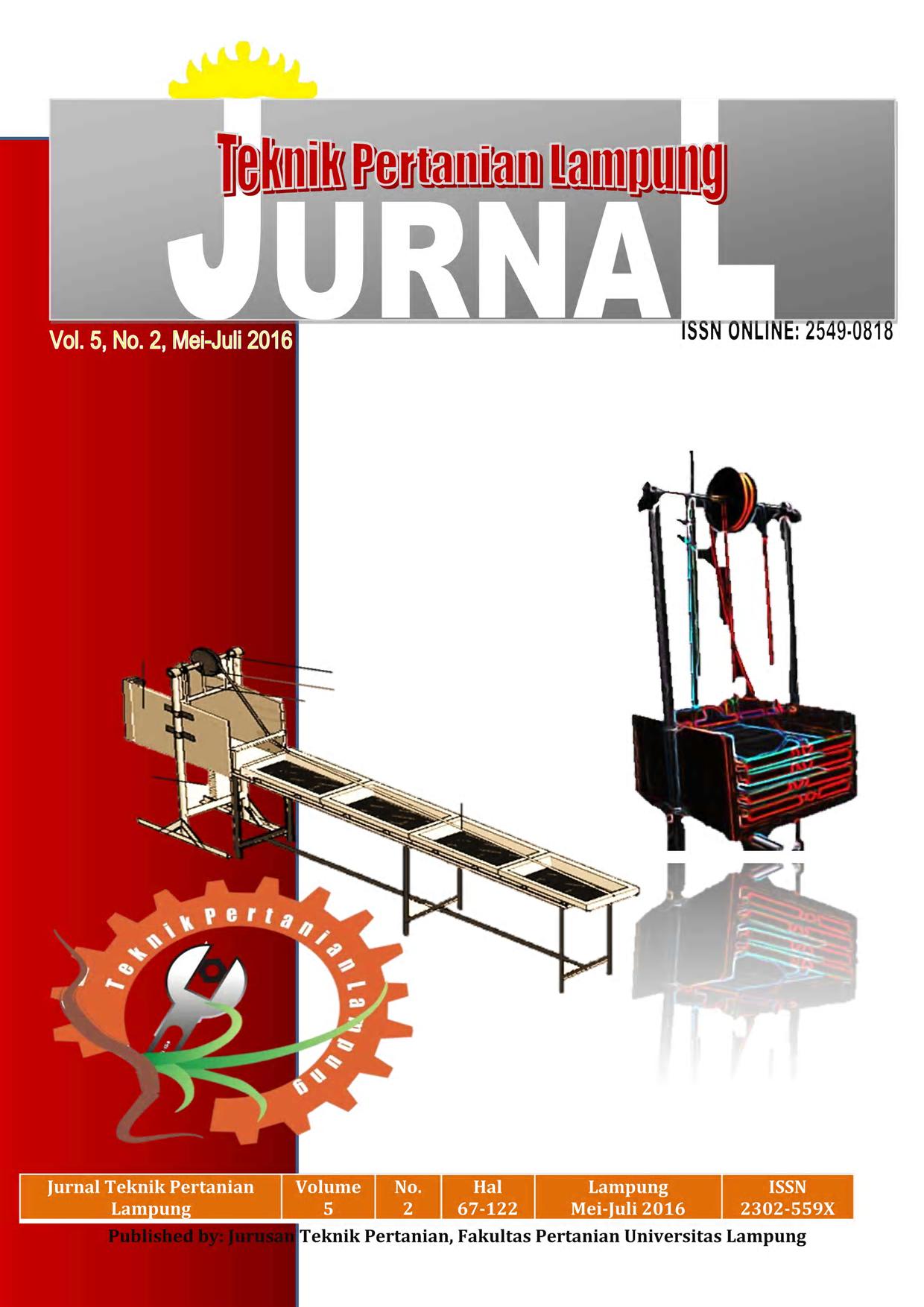PENGARUH DAYA LAMPU NEON TERHADAP PERTUMBUHAN TANAMAN PAK CHOI (Brassica rapa L.) PADA SISTEM HIDROPONIK INDOOR
Abstract
The purpose of this research was to observe the influence of neon lamp power (watt) on the growth of Pak Choiin an indoor hydroponic system. This research was done by implementing several pots of Pak Choi planting undersome different treatments of lighting. The treatment consisted of neon lamp 20 watt (N1), neon 2 x 20 watt (N2),neon 40 watt (N3), neon 2 x 40 watt (N4) in a growth chamber and one treatment under the sun lighting (N0).The result of the research showed that the treatment of 2 x 40 watt neon lamp (N4) turned out to have the bestresult at all variables measured. Then, it was followed by treatment of neon 40 watt (N3) and the lowest result wasin neon 20 watt (N1). The highest biomass harvested was 35 g in N4, followed by 18 g in N3, then the 15 g in N2and 4 g in N1. However, the highest ash content was in the treatment of 20 watt neon lamp (N1), and followed byN2 (neon 2 x 20 watt). Although, Pak Choi grown under the sun ray has the highest biomass harvested, but it hadthe lowest mineral content.
Keywords : Neon lamp, lamp power, Pak Choi, hydroponic wick system
Downloads
Published
Issue
Section
License
- Authors who publish with this journal agree to the following terms:
- Authors retain copyright and grant the journal right of first publication with the work simultaneously licensed under a Creative Commons Attribution-ShareAlike 4.0 International Lice that allows others to share the work with an acknowledgement of the work's authorship and initial publication in this journal.
- Authors are able to enter into separate, additional contractual arrangements for the non-exclusive distribution of the journal's published version of the work (e.g., post it to an institutional repository or publish it in a book), with an acknowledgement of its initial publication in this journal.
- Authors are permitted and encouraged to post their work online (e.g., in institutional repositories or on their website) prior to and during the submission process, as it can lead to productive exchanges, as well as earlier and greater citation of published work (See The Effect of Open Access).
Jurnal Teknik Pertanian Lampung

JTEPL is licensed under a Creative Commons Attribution-ShareAlike 4.0 International License.

